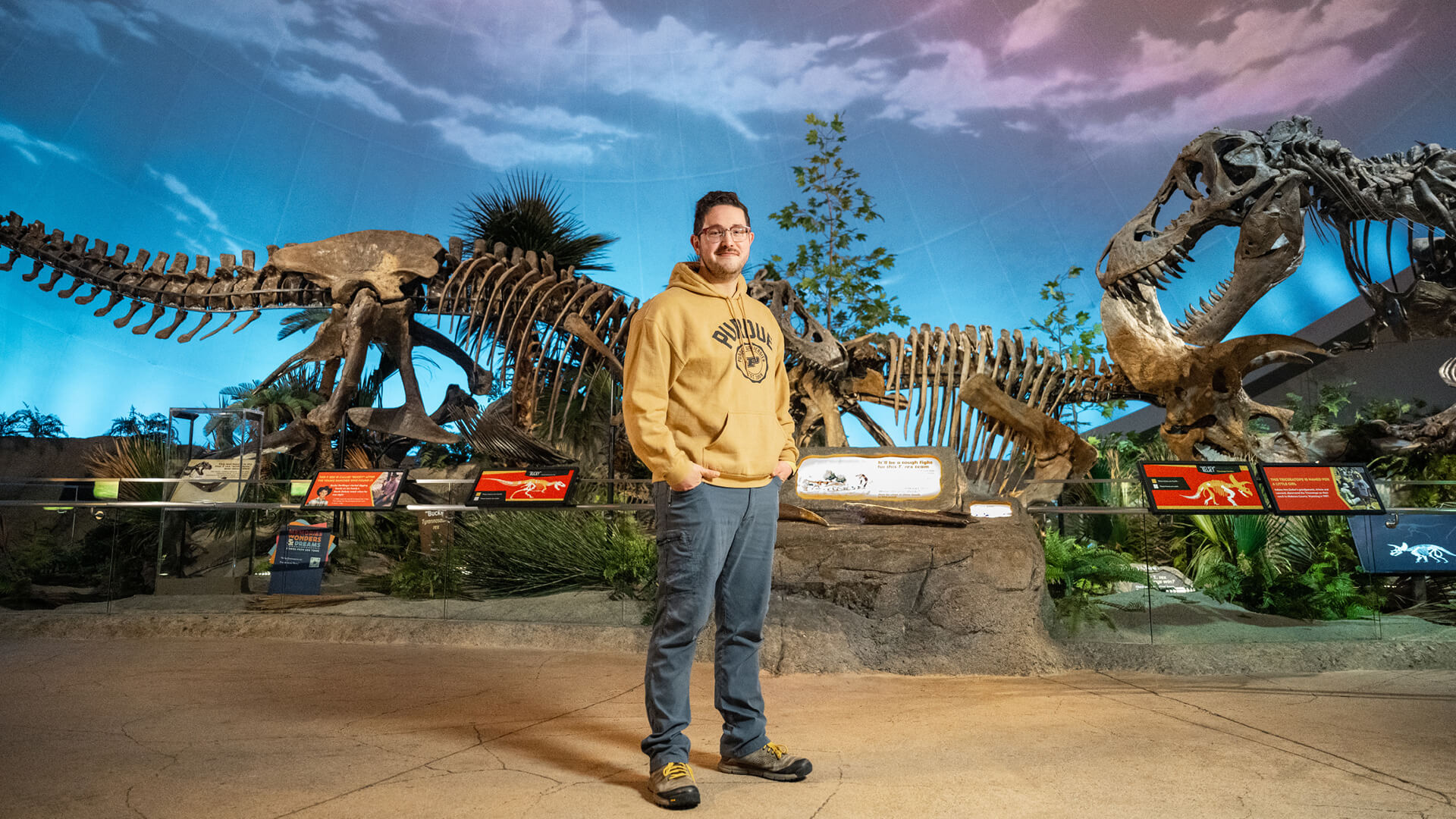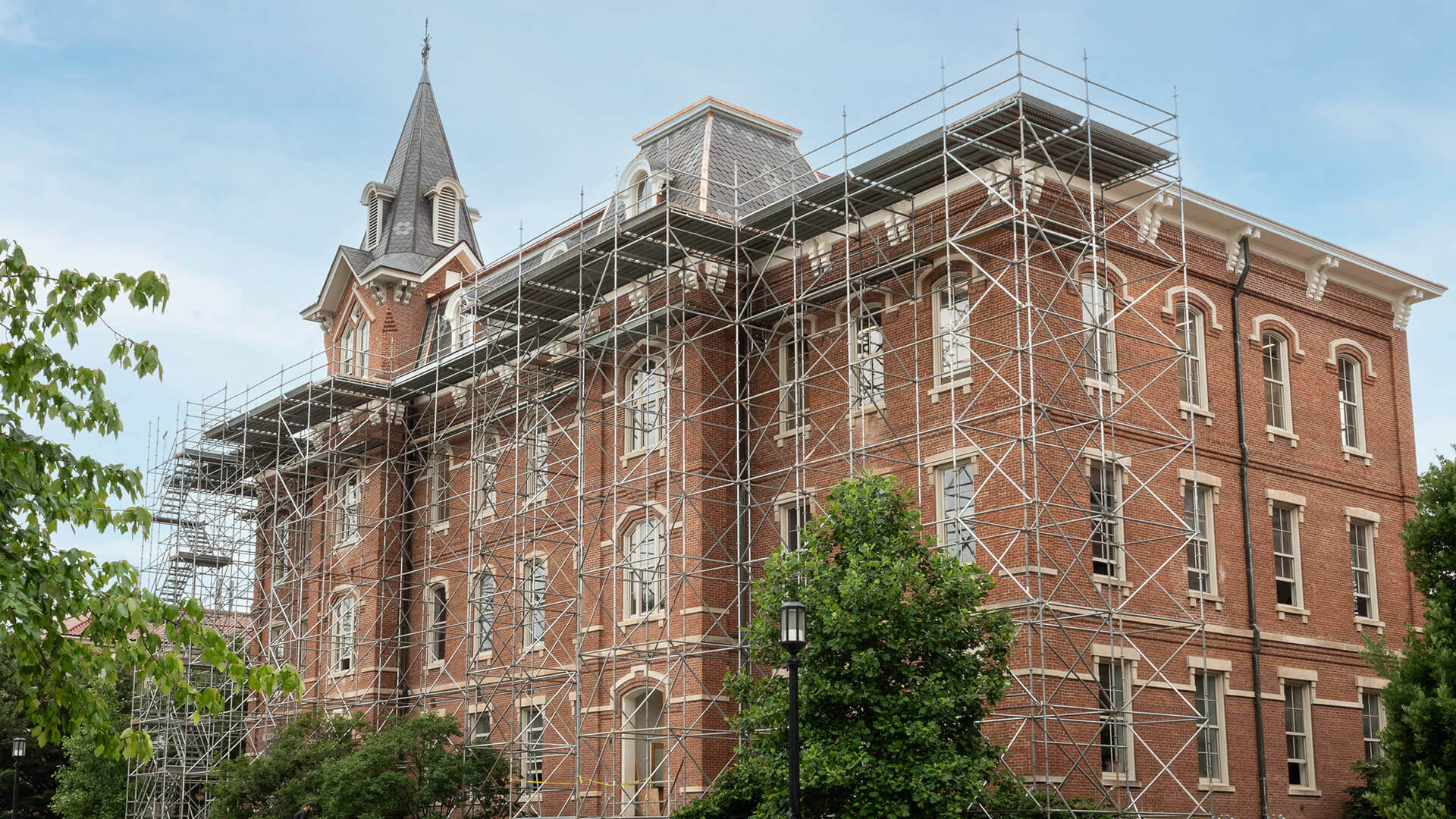Persistence personified: Campus art brings Boilermaker spirit to life
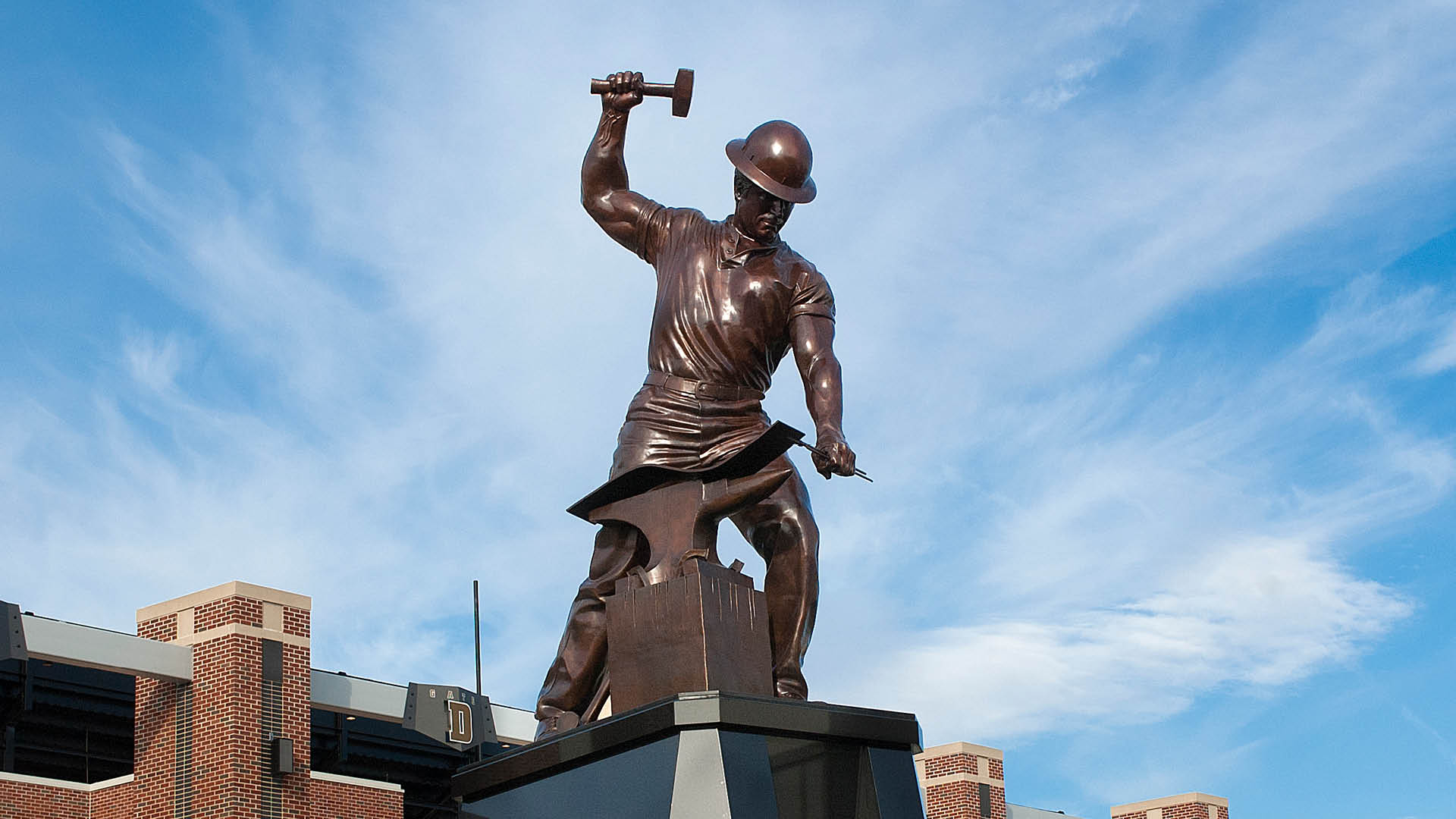
Unveiled in 2005, The Boilermaker pays tribute to the origin of the moniker given to the Purdue football team in 1891 after “the burly boiler makers” thrashed Wabash College 44-0.
Across West Lafayette, artwork and landmarks celebrate the accomplishments of the Purdue community
Every year, Purdue welcomes students from across the planet — every county in Indiana, all 50 states and nearly every country and nation.
Hailing from all walks of life, what is it that unites us as Boilermakers? It’s our belief in a better tomorrow — and our passion and persistence as we work together to make that a reality.
Artwork across Purdue’s West Lafayette campus pays tribute to this trademark Boilermaker persistence. Take a look at some of the most iconic art at Purdue with fresh eyes and explore their histories and intricacies.
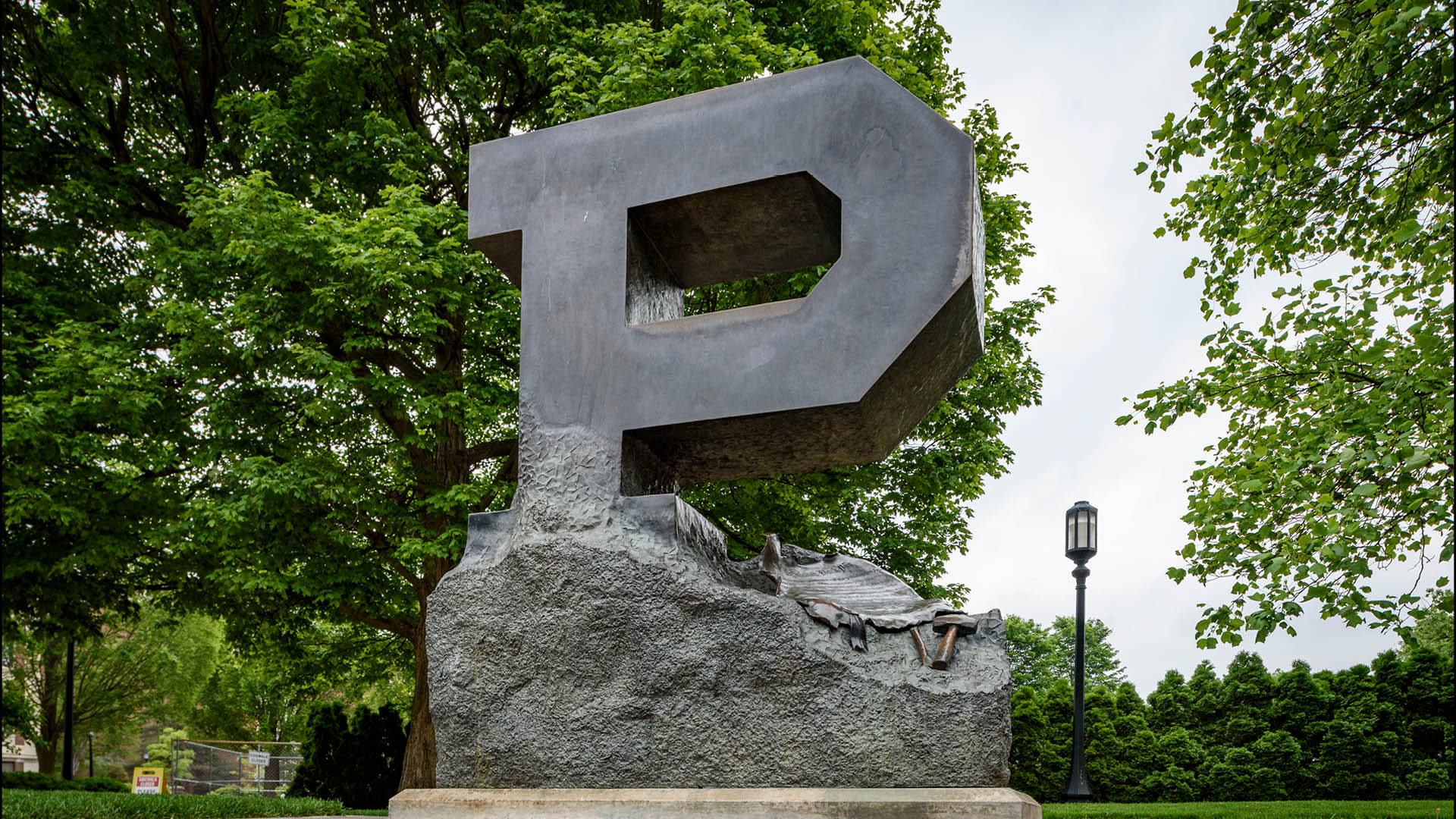
The Unfinished Block P: A timeless tribute to our quest for learning
One of Purdue’s most iconic landmarks, the Unfinished Block P has an air of permanence about it. Like it’s right where it was always meant to be.
That’s just what sculptors Rick and Rita Hadley intended. While the Purdue students in The Order of the Iron Key initially envisioned the piece as a granite monument, the Hadleys later proposed a bronze statue designed to appear as if carved from stone.
The 8-foot sculpture outside the Stewart Center pays homage to the classic Block P, conceived in 1907 by Paul Spotts Emrick, the university marching band’s first director. If a flock of birds could form a V shape in the sky, he reasoned, then surely a university band could form a P shape on the football field.
Today, it’s a popular destination for graduation photos — symbolizing that a Boilermaker’s education is a lifelong pursuit that lasts well beyond their time on campus.
Yet, the students who first proposed the Unfinished Block P intended that it also stand as a solemn tribute to those unable to complete their degrees.
After the sculpture was completed in 2008, it became the site of Golden Taps — a campus tradition dating back to 1994, which honors the lives of students who have passed away over the previous year.
I’ve heard other people say that if you’re going to experience just one tradition on campus, this would be the one. [Golden Taps] is an amazing way to see how the community comes together.
Steven Yeagley
Associate dean of students
The event, which takes place every April, is entirely run by student organizations, including the Black Voices of Inspiration choir, the Gimlet Leadership Honorary, Purdue Student Government, Purdue Graduate Student Government, the Purduettes and the Reamers — and, of course, the Purdue band.
“It is all students putting it on,” explains Steven Yeagley, associate dean of students. “Staff might be in the background to help coordinate it, but the ceremony is all student run.”
In recent years, Yeagley has noticed the sculpture becoming a focal point for the community throughout the year — at times, leaving flowers and items there to commemorate students who have passed.
“I’ve heard other people say that if you’re going to experience just one tradition on campus, this would be the one,” Yeagley shares. “This is an amazing way to see how the community comes together.”
The Boilermaker: Purdue’s legacy of persistence goes back to the start
One of the most iconic sights on Purdue’s West Lafayette campus is The Boilermaker statue. Based on extensive historical research, sculptor Jon Hair’s work pays tribute to the moniker originally attributed to the Purdue football team in 1891 after thrashing Wabash College 44-0.
A Purdue News Service article from 2005, the year that the statue was installed, quotes Jay Cooperider, the former associate athletic director for communications.
“We researched old photographs, records and newspaper articles to find out what real boilermakers wore when they worked in boiler rooms and combined the 19th century notion of a locomotive boilermaker with that of more modern imagery,” Cooperider explained.
Hair, who has achieved international acclaim with his work, began sculpting the piece in 2003. His more than 150 commissioned pieces include a bust of the legendary actor Dick Van Dyke; a life-size diver at the U.S. Olympic Training Center in Colorado Springs, Colorado; and Lucky 8, which commemorated the kickoff to the 2008 Olympics at 8:08 p.m. on Aug. 8, 2008.
In 2011, The Boilermaker made a primetime appearance on season 3 of “Parks and Recreation” in an episode titled “Jerry’s Painting.” The statue, pictured on the cover of the Lafayette Journal & Courier’s Football Saturday section, appears next to an article about the then-fledgling ROTC tradition of suiting up The Boilermaker in a jersey for game day.
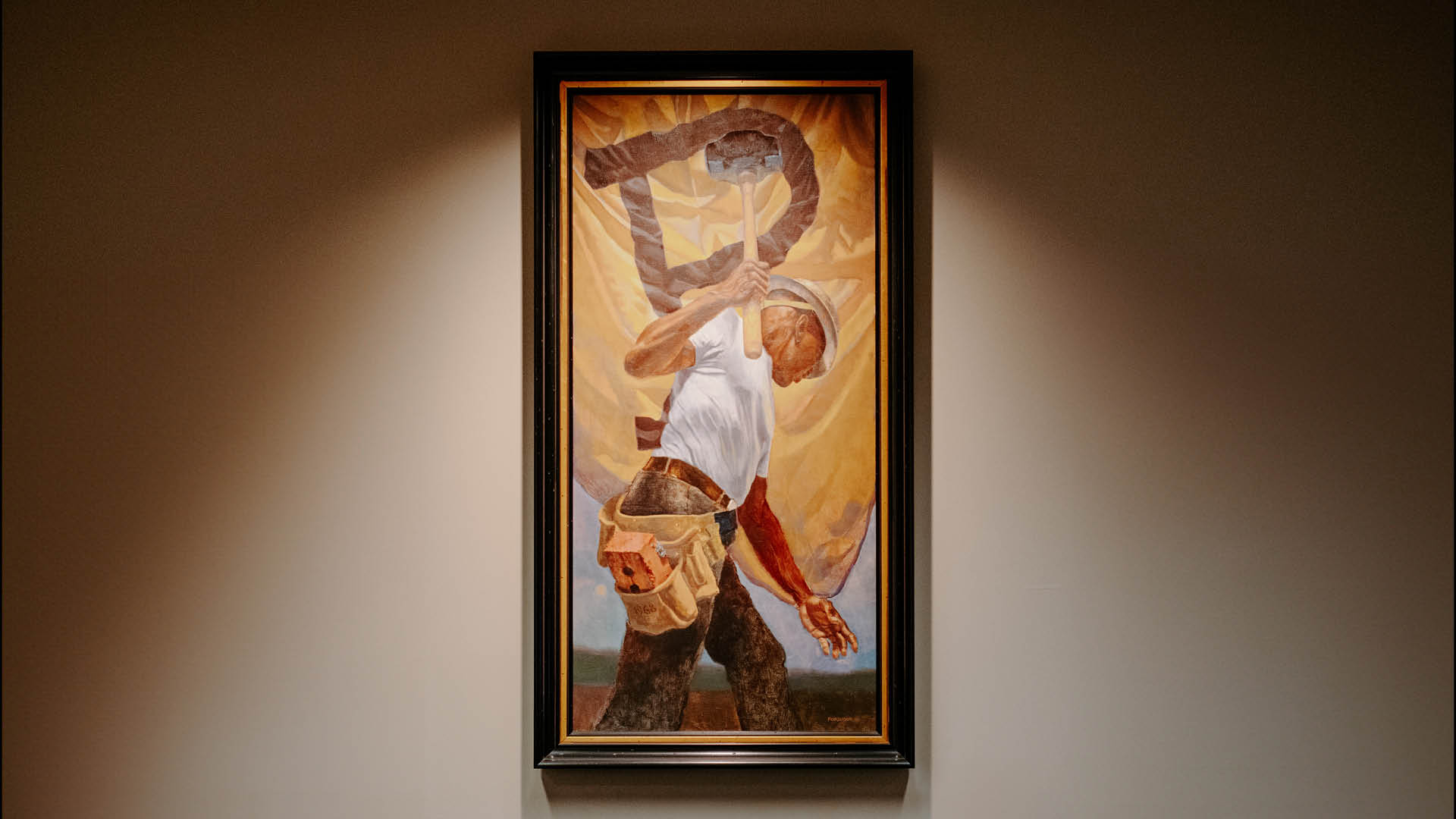
The individual identity of the boilermaker is unclear, and the work is ongoing. For these reasons, I like to think that the painting is also a call to action.
Derek Fordjour Artist
“The BOILERMAKER”: A persistent struggle toward equality
Unveiled at the 40th anniversary of the Purdue Black Cultural Center in 2009, “The BOILERMAKER” painting is a lasting tribute to generations of Black Boilermakers throughout Purdue’s history.
“I was commissioned by a group of alumni led by Tarrus Richardson,” says internationally acclaimed artist Derek Fordjour. “They had the vision to create an historical project commemorating the Black experience at Purdue.”
Careful examination of the painting reveals tributes to key moments, dating all the way back to David Robert Lewis, who became Purdue’s first Black graduate in 1894.
“Boilermakers have excelled in every conceivable field of human endeavor and achievement,” says Renee Thomas, associate vice provost for diversity and inclusion and former director of the Black Cultural Center. “Fordjour’s painting reflects the legacy of Black Boilermakers’ excellence and focuses on their strength and resilience.”
“I wanted to evoke a sense of history and symbolism,” Fordjour shares. “By personifying the Boilermaker mascot as a Black laborer, the work conjures notions of industrialism, labor movements and the legacy of Black protest.”
The red brick in the boilermaker’s tool belt speaks to the 1968 protest at Purdue in the wake of Dr. Martin Luther King Jr.’s assassination.
“Black students protested in the late ’60s for their own rights to fairer treatment,” Fordjour reflects. “While the painting seeks to historicize a legacy of student protest, it also suggests that each Black Boilermaker carries the responsibility to help build a more stable foundation for those that come behind them. The individual identity of the boilermaker is unclear, and the work is ongoing. For these reasons, I like to think that the painting is also a call to action.”
Times change, issues evolve and aesthetics morph. As Purdue’s campus grows, our resolve as Boilermakers never wavers as we remain in the persistent pursuit of a brighter future.
